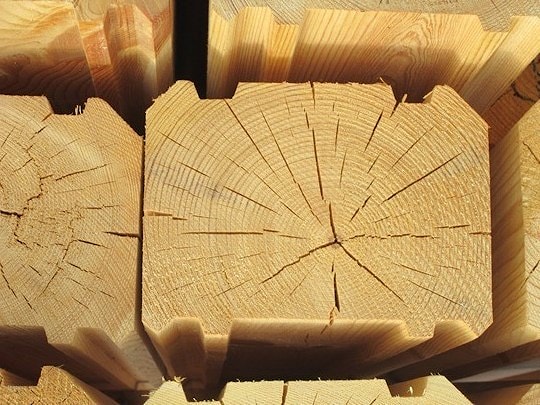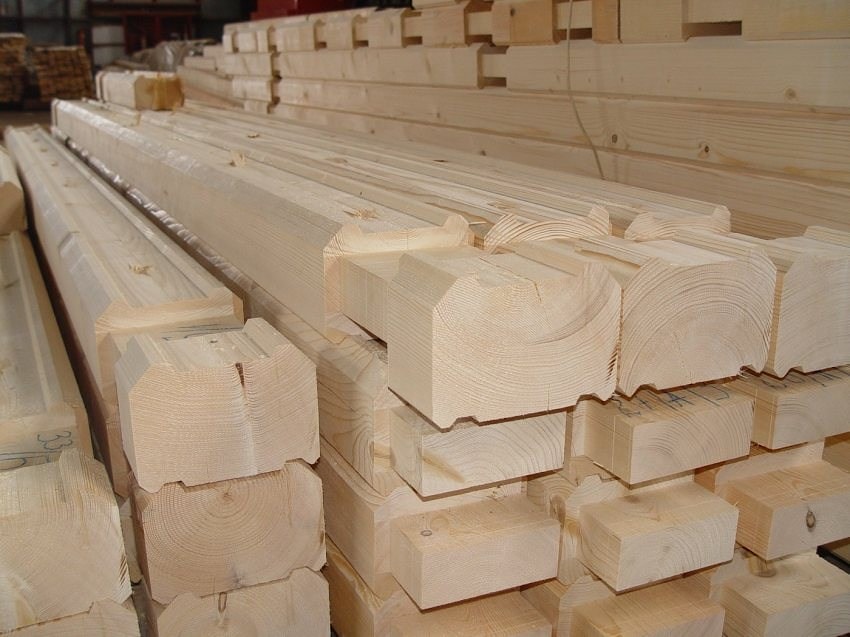≡ Menu
|
|
Wood main mechanical properties
Wood main mechanical propertiesMechanical properties of wood The use of wood as a structural material is due to the ability to resist the action of effort, i.e. mechanical properties. Distinguish the following properties of wood, manifested under the influence of mechanical loads: strength - the ability to resist destruction, deformability - the ability to resist changes in size and shape, technological and operational properties.Indicators of mechanical properties of wood are usually determined in the following types of tests: stretching, compression, bending and shearing. Since wood is an anisotropic material, i.e. material with different properties in different directions, indicate the direction of the action of loads: along or across the fibers (in the radial or tangential direction). Due to the resistance of the wood to external loads, internal forces arise in it. These forces, per unit area of section (1 cm2) are called stresses. The maximum stress preceding the destruction of the body is called the ultimate strength. The strength limit is determined on small, clean and non-defective specimens in laboratories on test machines. These samples have a base section with dimensions of 20 * 20 mm and should include at least 4-5 year layers. Some types of tests are performed on samples whose cross-section is different from the one indicated.  The compressive strength is determined on samples of a prismatic shape. The compressive strength across the fibers is determined by the scheme in the figure. Here is indicated the resultant forces, which are either uniformly distributed over the entire surface of the sample, or over the whole width, but on a part of its length (local compression). In both cases, the conditional ultimate strength is determined. The limit of proportionality is used as this indicator; the magnitude of the stresses to which a linear relationship between stresses and strains is observed. On average, for all rocks it is 1/10 compressive strength along the fibers. The average tensile strength at static bending is 100 MPa. In the tests, two equal and oppositely directed forces are applied to the sample, causing damage in a parallel plane, a shift occurs. There are three types of shear tests: chipping along the fibers, shearing across the fibers and cutting wood across the fibers. The magnitude of the tensile strength, the tangential maximum stresses for cleavage along fibers, on average for all rocks, is about 1/5 of the compressive strength along the fibers. The breaking strength across the fibers is 2 times smaller, and the breaking strength across the fibers is 4 times greater than the shear strength along the fibers. Deformity. With short-term loads in the wood, there are mainly elastic deformations that disappear after the load. Up to a certain limit, the relationship between stresses and deformations is close to linear (Hooke's law). The main index of deformation is the coefficient of proportionality, the modulus of elasticity. The modulus of elasticity along the fibers is E = 12-16 GPa, which is 20 times greater than across the fibers. The greater the modulus of elasticity, the harder the wood. With increasing content of bound water and wood temperature, its rigidity decreases. In the loaded wood, when drying or cooling, a part of the elastic deformations is converted into "frozen" residual deformations. They disappear when heated or moisturized. Since wood consists mainly of polymers with long flexible chain molecules, its deformability depends on the duration of the action of the loads. Mechanical properties of wood, as well as other polymers, are studied on the basis of the general science of rheology. This science considers the general laws of deformation of materials under the influence of the load, taking into account the time factor. Operational and technological properties. Strength of wood with prolonged permanent loads is important to know in connection with its use in building structures. The indicator of this property is the limit of long-term resistance 6ltr, which on average for all types of load is about 0.5 to 0.6 of the tensile strength for short-term static tests. The strength index for variable loads is the endurance limit, the average value of which is approximately 0.2 of the static tensile strength. In the design of wooden structures, are used calculated resistances (design resistances ) that are several times smaller than the strengths of small samples of wood which are not used in calculations. They take into account the large dimensions of structural elements, the presence of wood defects, the duration of the load, humidity, temperature and other factors. Specific viscosity characterizes the ability of wood to absorb work on impact without breaking and is determined during bending tests. The impact strength of hardwood is on average 2 times higher than that of coniferous wood. Hardness characterizes the ability of wood to resist pressing a harder body. The indicator of the static hardness of the sample, N / mm2, is the force referred to this area. The static hardness of the end surface is higher than that of the side surfaces. All domestic breeds in the hardness of the end face at a humidity of 12% are divided into 3 groups: soft (hardness 40 N / mm2 and less), hard (41-80) and very hard (more than 80 N / mm2). Shock hardness is determined by dropping a steel ball 25 mm in diameter from a height of 0.5 m to the surface of the sample, which is the greater the hardness is, the less the hardness of the wood. Wear resistance - the ability of wood to resist wear, i.e. gradual destruction of its surface zones during friction. Tests on the wear resistance of wood have shown that wear from the side surfaces is much greater than from the surface of the end cut. With increased density and hardness of wood, wear decreased. Wet wood wears more than dry. The unique property of wood is the ability to hold fasteners: nails, screws, staples, crutches, etc. When driving a nail into the wood, elastic deformations arise, which provide sufficient frictional force preventing the nail from pulling out. The effort required to pull a nail, slaughtered in the end of the sample, is less than the force applied to the nail clogged across the fibers. With increasing density, the resistance of wood to pulling a nail or a screw increases. The effort required to remove the screws (other things being equal) is greater than for the removal of nails, since in this case the resistance of the fibers to the cutting and tearing is added to the friction. The technological operation of bending wood is based on its ability to be relatively easily deformed under the action of avoiding efforts. The ability to bend higher in the ring-bearing rocks - oak, ash, etc., and from scattered-vascular - beech; Coniferous breeds have less ability to bend. Bending is subjected to wood, which is in a heated and wet state. This increases the ductility of the wood and allows, due to the formation of frozen deformations during subsequent cooling and drying under load, to fix the new shape of the part. For the comparative evaluation of the quality of wood, the so-called specific characteristics of mechanical properties are used, i.e. indicators of its mechanical properties, referred to a unit of density. Specific compressive strength and static bending in coniferous rocks is higher than that of hardwood. Significantly higher in coniferous rocks and specific rigidity. On the other properties, the specific characteristics of hardwood are higher than those of conifers. Specific characteristics of wood are of particular importance when a product or structure requires high strength at low weight. This is important for transport engineering, aircraft building, ship-building and in other cases. |
|
© 2025
ArchiLine Wooden Houses
114-49, Necrasov str., Minsk, Republic of Belarus, 220049
The site is powered by Nestorclub.com google.com, pub-6447061049723989, DIRECT, f08c47fec0942fa0 | |
 Good Wooden House since 2004
Good Wooden House since 2004



